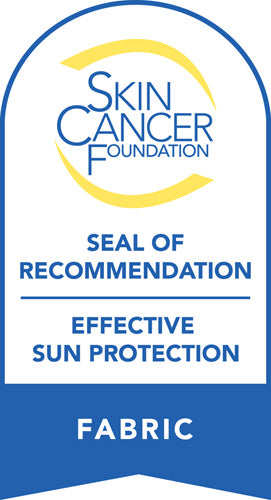5 Tips On What to Wear While Paddle Boarding
Are you just getting into paddle boarding but have no idea where to start? The easiest place to begin is with your clothing!
According to the Journal of Experimental Psychology, people who wore white coats that they thought belonged to doctors scored better on their tests. The same can be true when it comes to paddle boarding.
Invest in clothing that's specifically for paddle boarding. You may find that this puts you in a better mindset to enjoy the outdoors. Plus, it will offer better protection.
With this in mind, read on for our top five tips on what to wear paddle boarding!
1. Safety Gear
Your safety should always be your priority when out on the open water–you never know what could happen! A personal floatation device, or PFD, is one of the most important pieces of gear. Since the U.S. Coast Guard classifies paddles boards as vessels, a PFD is necessary.
Along with a PFD, you'll also need a whistle to wear around your neck to alert other people on the water of our location, especially when there isn't a lot of light. A coiled leash around your ankle and connected to your paddle board is also necessary.
If you fall off your paddle board, you don't want it drifting away from you–this is when the coiled leash comes in handy.
2. Sun Protection
Whether it's cold or hot out, you're most likely going to be paddle boarding in the morning or afternoon when the sun is out in full force. Harsh sun on your face isn't easy to deal with, even if you're wearing broad spectrum sunscreen.
To protect your face and eyes from the sun, remember to bring a sun hat and sunglasses to protect your face and eyes from the harmful UVA and UVB rays. You want to be able to see clearly at all times, and these items will cut down on the glare and squinting.
Ultraviolet (UV) rays from the sun can damage both your skin and your eyes if you're not careful. Wraparound sunglasses and a wide-brim hat are simple ways to avoid photokeratits, or inflammation of the cornea.
Without prolonged protection, your eyes can experience frequent blinking and watering, blurred vision, eye swilling, and even a "gritty" feeling.
3. When It's Hot
If you're going paddle boarding when it's hot out, wearing a regular swimsuit is completely fine. You'll need to make sure to reapply sunscreen frequently, especially if you're spending more than a few hours out on the water.
Women and men also have the option of wearing sun shirts and board shorts or a swimsuit on their bottom half. Water resistant and sun protective clothing such as sun shirts are made from a moisture-wicking material that can provide up to 50 UPF or more, giving you greater protection from the sun without needing to make frequent stops to apply sunscreen.
The longer sleeves partially cover your hands and provide thumb holes. They come in a variety of styles, such as:
- Crop
- Collared
- Pullover
- Hoodie
- Turtleneck
- Full-Zip
Choose the style that suits the weather. For instance, a crop top is a great choice for the summer when you want to stay cool while protecting your skin from the sun.
4. When It's Cold
If you're paddle boarding in cold weather, you still have a variety of options available. Long-sleeved sun shorts and pants are still an option, especially if you layer them. They'll be able to provide protection from the cold water as well as the dangerous rays from sun exposure.
Although not every cold day requires a wetsuit, these are the best options if you're facing extremely cold temperatures and want to stay warm. The fit of your wetsuit is one of the most important details to keep in mind. It needs to cling to every part of your body in order to work its best, stopping just short of your hands and feet.
It's also important to know that the thicker your wetsuit is, the warmer it will be. Here's a brief guide on wetsuit thickness:
- 50 Degrees Fahrenheit - 3-4mm thick wetsuit
- 30 Degrees Fahrenheit - 4-5mm thick wetsuit
- 10 Degrees Fahrenheit - 5-6mm thick wetsuit
You'll want to pair your wetsuit with thick neoprene gloves and booties so that your hands and feet aren't exposed to the elements. Wetsuits can also come with hoods so that you can protect the sides of your face and your ears.
5. Shoes
Last but not least, you're probably wondering what you should wear to cover your feet. If you're paddle boarding in the summer, going barefoot is best because you'll be able to stay cool while gripping to the board better with your feet.
In the winter, you'll want to wear slip-on water shoes that cover your feet and keep them warm while being grippy enough to click to the board. You also have the option of wearing deck shoes if you don't plan on getting your feet too wet.
You'll find that neoprene booties work the best when it gets to 50 degrees Fahrenheit or colder. You'll want booties that are slightly thicker than the wetsuit you're wearing. For instance, if you're wearing a 3mm thick wetsuit, 4mm thick neoprene booties are ideal so that your feet don't get cold.
What to Wear Paddle boarding: Staying Protected and Comfortable
Now that you know what to wear paddle boarding, you'll feel confident whether it's cold or hot out. Staying comfortable no matter the weather will help you perform better and stay in the moment.
Lastly, don't forget to invest in a whistle, coiled leash, and personal floatation device to keep you safe. You never know what could happen, and these three simple items could save you from major injuries.
Ready to start shopping for your new UPF clothing paddle boarding clothing and gear? Check out all the 50+ UPF apparel we have available to keep you comfortable!
You can also check out an interesting article on the top 10 fishing paddle boards!



